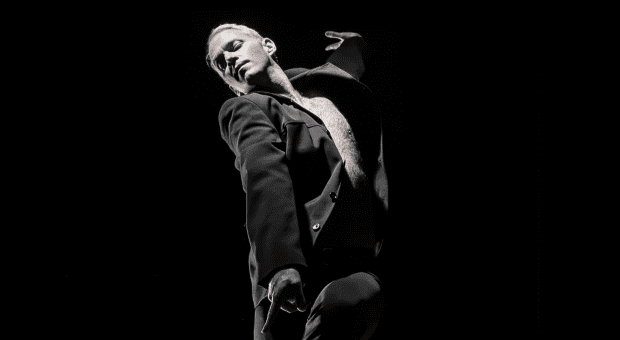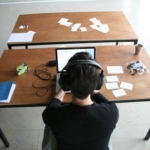Darryl Tracy is still working out how to discuss his profession with prospective mates.
“When I tell people I’m a neuro-physiotherapist, they assume I have a lot of money and I’ll look after them and pay their condo fees,” he says, laughing. “When I tell them I’m a dancer, they assume I’ve got a great ass and they’ll find me waiting lubed-up on all fours. None of that is true. Except for the part about the great ass.”
Though Tracy’s multiple careers can prove confounding to potential partners, the constantly evolving relationship between his identities as therapist and dance artist has always made natural sense to him.
“After training in physio, I came to dance with a specific knowledge of the body, and it meant I could fast-track through certain aspects of the training,” he says. “But in dance I also completely rediscovered the body, and it allowed me to open up my physio practice in ways I had never considered.”
Passionate about performing as a child, Tracy could often be found twirling a baton in the backyard or lip-synching to Donny and Marie Osmond in his room. But growing up in rural New Brunswick, he found neither opportunities nor encouragement for boys to pursue the arts. Shelving his passion in favour of practicality, he headed for Halifax after high school and earned his degree at Dalhousie, before setting his sights on Toronto.
During his early days in the city, dance was relegated to go-going at gay clubs. But when some other therapists in his practice began taking jazz classes recreationally, he jumped at the chance to join, and his untapped childhood passion awoke. In a bold move, he decided to reduce his hours at the clinic and make dance his full-time focus. At 27, he was entering the field about two decades later than most.
“I was kind of naive back then and would just throw myself into situations, without really thinking about whether they would work out,” he says. “A lot of people thought I was crazy to be leaving a lucrative career for something so unstable, especially because I was doing it at that age. But diving in like that meant I had to learn at an exponential rate, and things kind of snowballed. I didn’t necessarily judge everything when I was younger, and in my career now I sometimes notice myself wanting a bit of that naive youth again.”
Though he’s balanced both careers for nearly 20 years, Tracy didn’t stay in physio just for the stability. Working in two separate fields brings a unique perspective to each practice.
“In neuro-physiotherapy, novelty is very important; you’re always pushing people to the next step and to try something new,” he says. “That approach comes into how I choreograph. I’m always working with dancers on where the limits of their bodies are and trying to push them into new terrain.”
For his upcoming event Vital Signs, Tracy finds himself back onstage, performing in three pieces, including the world premiere solo A Map of Lightyears, choreographed for him by long-time collaborator Heidi Strauss. The pair first met in 1995 and began working together shortly after, commissioning other choreographers to create duets for them. Though they had folded their company in 2006, when they found themselves performing together again two years ago in another choreographer’s project, they felt compelled to reunite.
Though dance is usually obsessed with young bodies, A Map of Lightyears takes its inspiration from Tracy’s aging frame. Despite a relatively injury-free career, at 46 he can see the impacts of time on his ability to perform.
“Heidi was very interested in the fact I’m getting older and looking at what happens to our bodies as we age,” Tracy says. “We’re working with this idea of mapping the body over time and examining how and where its limits change. She’s been crafting things so I don’t hurt myself but also so it reveals where my body is at right now. It’s a little demoralizing, but that’s the theme of the work, so I’m fine to go there.”
“There are obviously some things I can’t do anymore or can’t do as well as I used to,” he adds. “But I don’t want to be onstage trying to land a triple pirouette into the splits and have people shaking their heads, embarrassed for me and wondering why I’m up there.”
Vital Signs
Wed, Sept 11-Sat, Sept 14, 8pm
Winchester Street Theatre, 80 Winchester St
facebook.com/dt.vital.signs
vital-signs.eventbrite.com


 Why you can trust Xtra
Why you can trust Xtra


